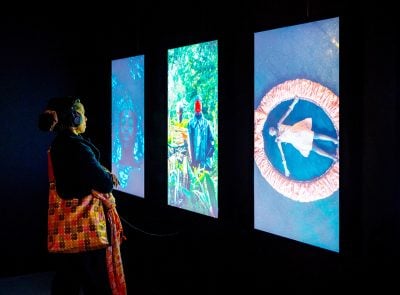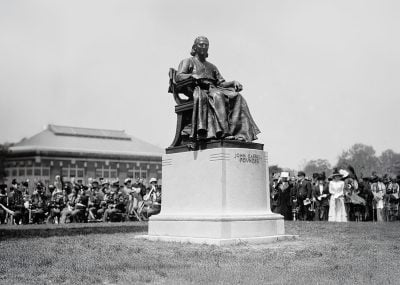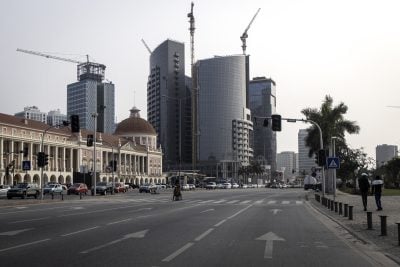Driven by a growing market of indigenous investors, African art is commanding increasingly high prices at the world’s auction houses. Will McBain investigates this new frontier in a world previously dominated by investors from established economies.
In what’s likely to be remembered as a strong year for African art, the Ghanaian Pavilion shook up the Venice Art Biennale, crowds packed London’s contemporary African art fair, 1:54, and Lagos closed a vibrant season with the acclaimed ART X, West Africa’s first international fair.
For the second successive year, a painting by the late Ben Enwonwu, widely considered the father of Nigerian modernism, fetched the equivalent of over a million dollars at auction, with his portrait Christine selling for £1.1m ($1.4m) at Sotheby’s, London. In 2018, after decades spent furnishing the wall of a north London flat, Enwonwu’s masterpiece Tutu was auctioned at Bonhams for £1.2m, a figure way beyond its pre-sale estimate of £300,000.
“I think we’re finally seeing some recognition for artists from the continent that were previously overlooked by the international art world,” says Hannah O’Leary, head of modern and contemporary African art at Sotheby’s. “I think we should be ready for paintings from Africa making six, seven figures as standard, whereas 12 months ago or 24 months ago, those prices were really very exceptional. I think that’s a really exciting breakthrough – to bring the market away from being low to middle market, from being very affordable, to right up in line with the regional markets in the rest of the world.”
Since Sotheby’s successful inaugural £2.26m sale of modern and contemporary African art in May 2017, its auction houses have introduced two auctions per year, with sales in 2019 coming in at £5.1m, according to auction analysis by the ArtTactic website.
The sales of Enwonwu’s pieces have acted as a bellwether for the market, highlighting a vigorous arts scene in Africa that had previously been viewed as provincial by the wider international community.
“Once you start understanding these artists, their life, their work, the circumstances in which they were working under, you cannot help but realise that these were important artists of the 20th century,” says O’Leary.
South African Gerard Sekoto’s Cyclists in Sophiatown, which visualises the economic hardship faced by black South Africans in pre-Apartheid Johannesburg, was sold at Sotheby’s for £362,500 in October, the second highest sale of an African piece in 2019.
Noting the meteoric rise in modern and contemporary art from Africa, collectors are increasingly aware of the investment value of works. An internet-driven market has transformed expectations and enabled the works of established names and up-and-coming artists to be disseminated and discussed. A burgeoning collector class, bolstered by bankers and industrialists from Africa’s biggest economy, Nigeria, and from the rapidly growing economies of Ghana and Senegal, are pushing the market further.
Photographers – epitomised by Ivorian Joana Choumali, the first African artist to win the prestigious Prix Pictet photography competition in November – and sculptors and painters, have helped shift conceptions about the value of contemporary art.

Nigerian and South African investment funds are acquiring works and betting on rising demand in the decades to come. An increasing number of high net worth individuals located in Nigeria – the country with the fasting growing number of individuals with a net worth of $1m to $30m in the world according to Wealth-X’s High Net Worth Handbook 2019 – are eyeing up investments in painting or sculpture at auctions in London, New York or South Africa. In 2017, 90% of the value and 64% of the volume of the sales at African Art auctions at Bonhams came from works by Nigerian artists, according to the Nigerian Art Market Report.
Other African collectors are investing as a way to connect with their culture. Over 70% of buyers at Bonhams’ recent designated auctions were African, while Enwonwu’s Tutu was purchased by a Nigerian and is reportedly back in the West African nation.
According to Giles Peppiatt, director of modern and contemporary African art at Bonhams, it’s a significant change from where the market was 10 years ago, when the auction house decided to expand and enter into the wider sub-Saharan market outside of South Africa but didn’t have a single list of buyers to send their Africa catalogue to.
“It took about two years for the market to understand what we were doing, and it took about three or four years for the collectors and museums to understand and say that ‘yes, this is a market that we should be taking part in’. Certainly the major museums are now very active because they all think that this is a market of the future, and they obviously want to acquire works while the prices are still relatively modest for them,” Peppitt says.
The South African market remains firmly established; the Investec Cape Town Art Fair is one of Africa’s largest, and FNB Art Joburg draws significant crowds. An established gallery system puts the nation at the centre of the art market on the continent.
In Senegal, the opening of the huge Museum of Black Civilisations in Dakar, in late 2018, is driving renewed interest in art. In Ghana, the market is benefiting from having one of Africa’s best art schools located in the town of Kumasi and a government actively invested in art promotion.
“The government and leadership there are realising that art can be a money spinner through tourism, and through the soft power you can use with art,” says Peppiatt.
Powering the scene in Accra is Gallery 1957 – named after the year Ghana won independence. Director Victoria Alice Cooke says the market has been boosted by the Year of Return, Ghana 2019, a government-sponsored programme of events marking the 400th anniversary of the arrival of the first slaves in Jamestown, Virginia, which has precipitated a significant increase in visitors to the country.
“This has increasingly helped put Ghana on the map, with so much more footfall, so much more talk of what’s going on here. It’s generated a lot of hype at the moment with social media showing the artists talent to a wider audience.”
New frontier
With global art sales reaching an estimated $67.4bn in 2018, according to figures from a report by Art Basel and UBS Bank, the growth of an African market represents a new frontier for an industry previously dominated by established economies.
Nevertheless, like other luxury sectors, the African market remains vulnerable to the vagaries of economic growth. International African sales in the first half of 2019 by Christie’s, Sotheby’s, Philips, Bonhams, Piasa, Strauss and ArtHouse Nigeria generated a total of $25.3m, 11.3% less than in the first half of 2018, according to ArtTactic.
Yet the long-term trends remain strong, according to experts.
“Rome was never built in a day,” says Giles Peppiatt, “but one has to look at how far the market has come from 10 years ago, when there was nothing. And now we have this very strong, big market, that’s one of the fastest growing in the art world, so you have to be pretty optimistic on the whole.”
Want to continue reading? Subscribe today.
You've read all your free articles for this month! Subscribe now to enjoy full access to our content.
Digital Monthly
£8.00 / month
Receive full unlimited access to our articles, opinions, podcasts and more.
Digital Yearly
£70.00 / year
Our best value offer - save £26 and gain access to all of our digital content for an entire year!
 Sign in with Google
Sign in with Google 


